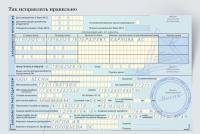OKVED "Cargo transportation" - decoding
The presence of production enterprises, workshops and factories within the country necessitates the creation of logistics routes along which goods and cargo for various purposes will be moved for further sale. All these processes are united by the concept of “cargo transportation”. This includes all types of land, air and rail transport. In addition, according to OKVED, cargo transportation also includes pipeline transportation. There are thousands of highways, routes and paved paths along which various means of transportation move, as well as enterprises providing such services. To control these processes and collect taxes and duties in a timely manner, the All-Russian Classifier of Economic Activities is used, in which several classes of codes are allocated to describe these areas.
For a person who is dealing with the issue of opening a business entity for the first time, this procedure may seem quite complicated, since it includes the mandatory filling out of special forms indicating profile activity codes. And if you look at the new edition of OKVED, it becomes clear that not everything is so simple. For example, according to OKVED 2016, cargo transportation can be carried out both by specialized companies with their own fleet of vehicles, and by private individuals and individual entrepreneurs. And there is a difference between these two services. The second nuance is the use of special transport and other means whose purpose is not defined. All this affects the choice of codes. Let's consider the main directions that exist in this field of activity.
Types of cargo transportation
So, the first division is based on the type of transport used for transportation. Exists:
- Railway – suburban, intercity, international trains.
- Automotive specialized transport - trucks, refrigerators, vans, etc.
- Air – cargo aircraft of various models and modifications, etc.
- Pipeline transport – gas pipelines, oil pipelines, air ducts, water pipelines.
Naturally, each of them corresponds to a set of codes in the classifier.
The second distinction is made by the type of cargo transported. Specialized, dangerous, food products - all these are distinguished by government agencies and classified differently. For example, if you want to transport fuel or petroleum products, you will need special transport and a license for this type of transportation.
In addition, the section of OKVED 2016 on the organization of cargo transportation may also include the rental of all kinds of transport: both road and other land vehicles. And this should also be taken into account when registering. After all, it is not necessary to engage in actual transportation. You can organize your own fleet of vehicles, and then you will also be included in the companies involved in cargo transportation. In general, it is the class of automobile transportation using general or special purpose roads that is the most extensive of those presented in the classifier. This is evidenced by more than a dozen subclasses and their detailed descriptions. Therefore, when choosing this direction, it is necessary to understand the issue as deeply as possible in order to avoid mistakes. Any omission in specifying the code in the application may become a valid reason for refusal to open a business entity.
Special subsections
The Federal Tax Service has provided not only the usual and common types of services and methods of transportation. Along with cars, planes and trains, the list includes devices that are driven by humans or animals. Of course, today few people use this type of transport, but it is quite possible that in the periphery it still remains relevant and in demand.
There are a number of other nuances that you should remember when starting your own business in this direction. For example, when opening a transportation organization, you may need warehouses for temporary storage of goods, loading and unloading, record keeping and other processes. But this form of activity no longer relates to transport services and has its own codes. In accordance with the new OKVED 2016, cargo transportation can only include the transportation itself and the rental of vehicles. And if you use warehouses that are on the company’s balance sheet without indicating additional codes in the application, this will lead to penalties and various negative consequences, including confiscation of property.

So before going through the opening procedure, you should take care of all the factors that may affect your activity. To do this, first use the new edition of the classifier, select the cargo transportation codes that interest you from OKVED, and write them down separately so that the information is always at hand. In this case, you will not have to frantically search for the necessary data when filling out official documents, and the entire procedure will go smoothly and without hitches.






